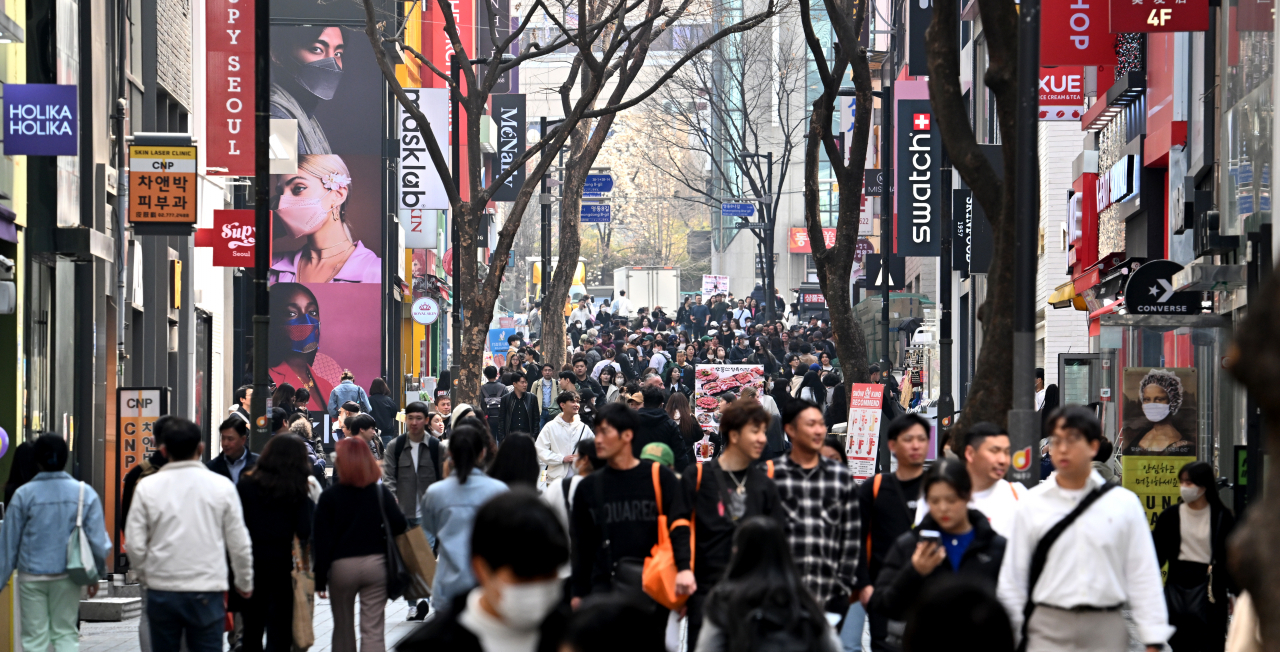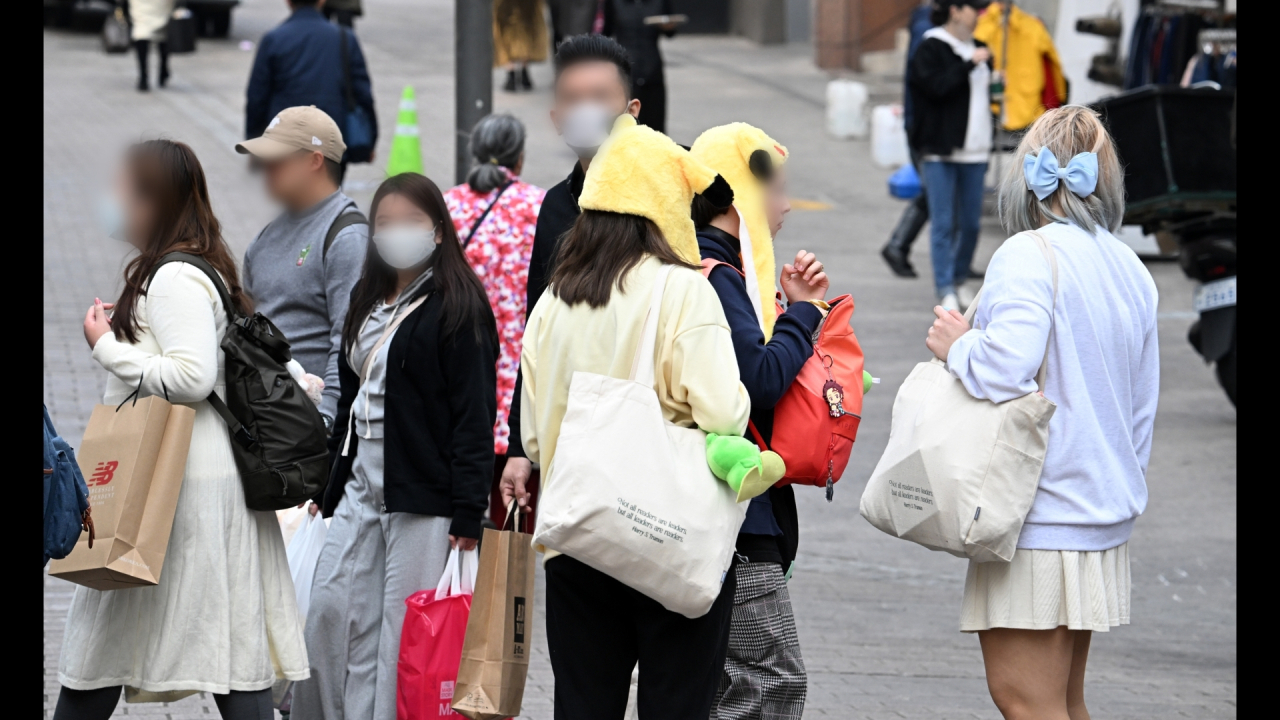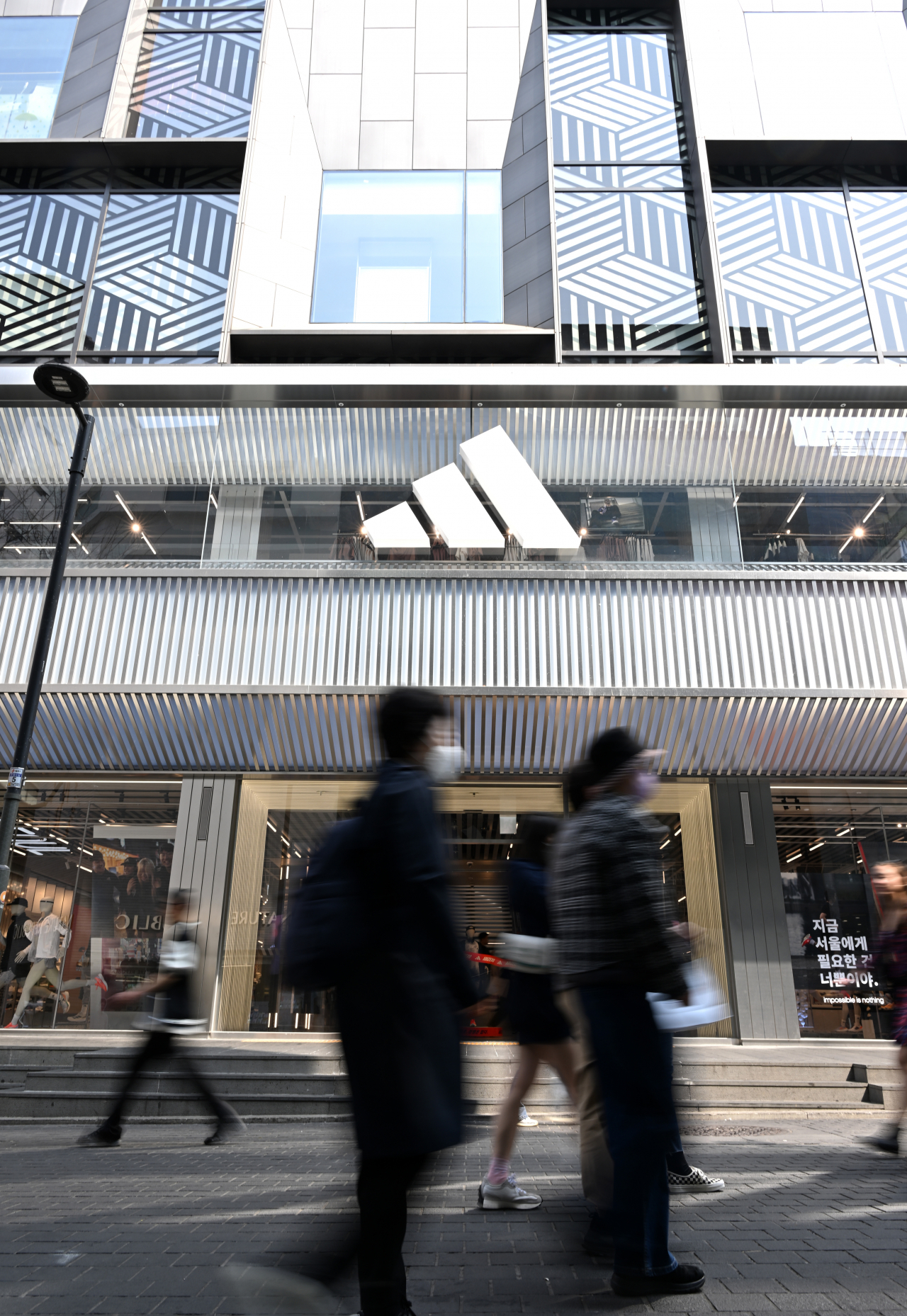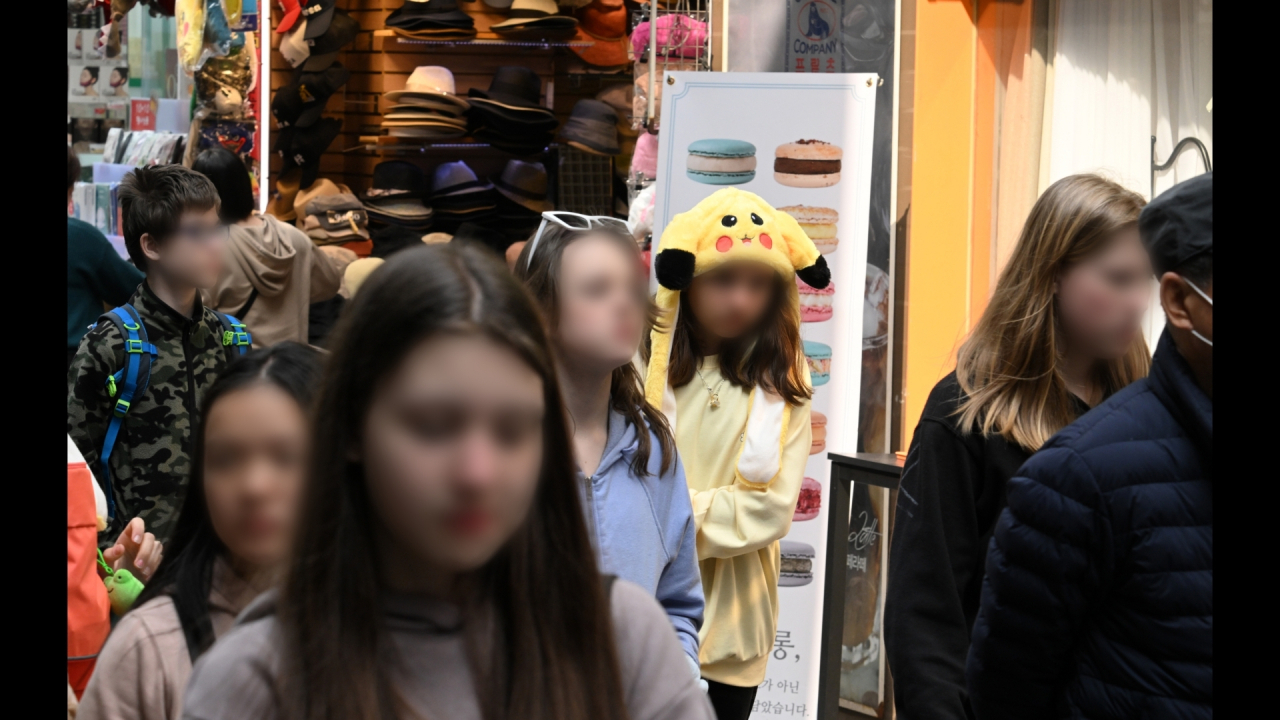 |
People walk on the main street in the Myeong-dong area, Seoul, on Wednesday. The commercial district of Myeong-dong has been revitalized since last year, particularly after the South Korean government lifted major travel restrictions that were imposed during the COVID-19 pandemic. Increases in the number of Japanese tourists to South Korea has been reported, whereas the number of Chinese travelers remained low amid sour diplomatic relations between the two countries. (Im Se-jun/The Korea Herald) |
Foreign travelers are returning to Myeong-dong after over three years of economic decline due to the COVID-19 pandemic, with the central Seoul shopping district seeing signs of recovery.
“Between last winter and now, I have been able to see a lot more foreigners in the Myeong-dong area, particularly on the main street. From morning until midnight, foreigners continue to flow into the area," a 27-year-old part-time worker surnamed Kim told The Korea Herald in Myeong-dong, Seoul, Tuesday.
Behind the recently increased number of foreign travelers have been those from Japan and Southeast Asian countries, according to merchants operating businesses in the area.
"It is almost as busy as before the pandemic," said Cho, a street vendor owner in the main commercial district of Myeong-dong. Cho added, "I can see a greater number of travelers from Japan and Southeast Asian countries."
“It feels like the number of Japanese travelers coming to this information center almost doubled since last year,” said Lee Ji-young, the head manager of the Myeong-dong Tourist Information Center.
According to Korea Tourism Organization data, the number of foreign travelers who visited South Korea in February this year reached 479,248 up from 99,999 in February last year.
This past February, the number of Japanese travelers stood at 94,393 people, accounting for 19.7 percent of the total and taking up the largest portion.
In the past, the number of Chinese travelers always topped those of other countries.
"The number of foreign tourists who visit Myeong-dong has jumped after the government lifted strict travel restrictions last year. More Japanese people seemed to have visited after that as well," said a tour guide from the Seoul Tourism Association, who was answering questions asked by foreign tourists on the street.
In September last year, the number of Japanese travelers remained at 27,560, accounting for 8.2 percent of the total number of tourists who visited South Korea, 337,638.
But in the following month, after travel restrictions are lifted, the number of Japanese travelers jumped to 67,159, or 14.1 percent of the 476,097 tourists who visited the country in October.
 |
Foreign travelers are spotted in the Myeong-dong area in central Seoul, Wednesday. (Im Se-jun/The Korea Herald) |
Amid hopes that Myeong-dong’s commercial district will continue to recover, the vacancy rate for commercial buildings nearby the main district has been also decreasing recently.
According to Korea Real Estate Board data, the vacancy rate for small-sized commercial buildings in Myeong-dong, during the fourth quarter last year, came down to 21.5 percent, from 42.1 percent in the first quarter of the same year.
The vacancy rate once hit a record high of 50.3 percent in 2021 when the country’s tourism industry was crippled by the COVID-19 pandemic.
The downward trend in rents for real estate properties in the Myeong-dong area has also slowed down. The real estate board said rental prices for mid- and large-sized properties only went down by 4 percent on-year in the fourth quarter of 2022, whereas they fell 30 percent on-year in the same quarter in 2021.
A licensed real estate agent in Myeong-dong also said, “There has been an increasing number of people who ask if there are any offices available. But many of them have been already leased and are under construction for shop openings.”
"Rental fees dropped significantly during the pandemic, and it allowed large brands -- like Adidas and ABC-Mart -- to open their flagship stores in Myeong-dong and replace large-sized cosmetic brand stores that were sitting on very large sites," said Dan Kim, the senior executive director of Cushman & Wakefield real estate services.
 |
A picture shows the newly opened Adidas flagship store at M Plaza on the main street of Myeong-dong, Seoul. (Im Se-jun/The Korea Herald) |
In February, Adidas reopened its biggest store in South Korea in the M Plaza building of the shopping district.
Japanese footwear company ABC-Mart, in particular, also opened its fourth Myeong-dong store last December, by combining a few properties into a bigger one.
"More brands are expected to try to open large-sized flagship stores by bringing small-sized stores together in the future," Kim added.
Myeong-dong is expected to make a full recovery to pre-pandemic tourist numbers when more Chinese tourists come back.
In February 2019, the number of travelers visiting Korea came to 1,201,802, and 481,681 were from China, according to Korea Tourism Data.
But in February this year, the number of Chinese tourists came merely to 45,884, or 9.6 percent of all the foreign travelers who visited the country.
 |
Foreign travelers are spotted in the Myeong-dong area in central Seoul, Wednesday. (Im Se-jun/The Korea Herald) |
The Seoul Tourism Association agent said that the number of Chinese travelers has shown no dramatic increase yet, despite the fact that there have been some marginal increases in the number of travelers from Taiwan and Hong Kong.
One of the main reasons for the slow recovery of Chinese travelers is a diplomatic dispute between South Korea and China.
In January this year, China stopped issuing short-term visas, after Seoul’s decision to strengthen COVID-19 curbs on Chinese travelers.
South Korea has been also excluded from China's recent list of overseas group tour destinations, which included 60 countries.







![[Weekender] Korea's traditional sauce culture gains global recognition](http://res.heraldm.com/phpwas/restmb_idxmake.php?idx=644&simg=/content/image/2024/11/21/20241121050153_0.jpg)